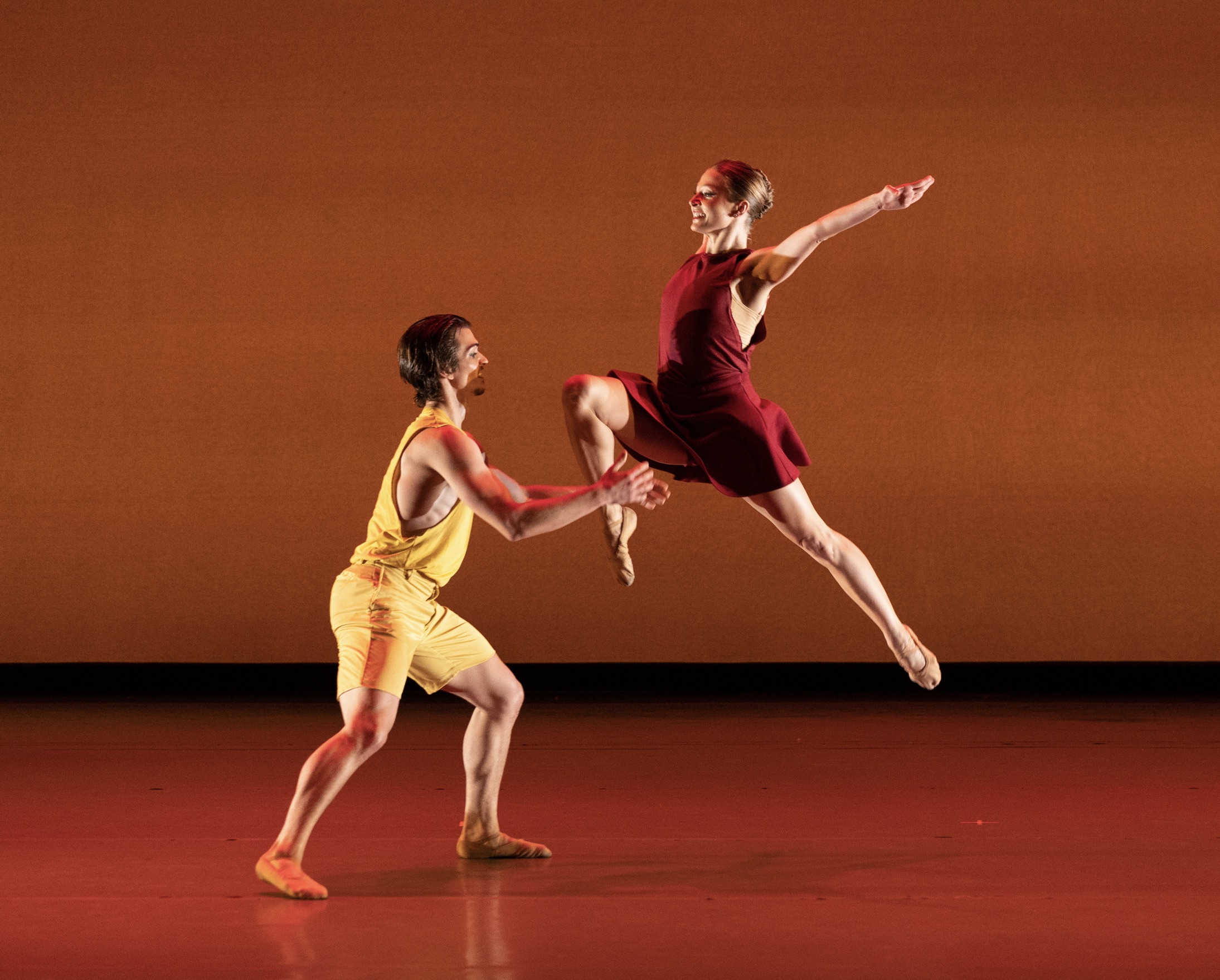
American Repertory Ballet Review: A Gem in the Garden State
The Ballet Herald |by Nadia Vostrikov
Ethan Stiefel doesn’t shy away from trying new things. He pushed the Royal New Zealand Ballet forward as Artistic Director, choreographed a JFK/Space themed piece for the Washington Ballet, and of course, drove a motorcycle across a stage as the semi-villainous Cooper Nielsen in Center Stage.
It is unsurprising that he would put on a mixed bill of three world premieres at American Repertory Ballet, as their recently appointed Artistic Director. Titled Movin’ + Groovin’, the program includes an array of styles that complement each other nicely.
Program notes highlighted the selection of choreographers as a group who made the move “from dancers to dancemakers”. While one could argue that most choreographers make the very same transition, it is an interesting notion to hire young choreographers so close in time to their dance careers. Claire Davison still dances with the American Ballet Theater and Caili Quan danced with Ballet X until 2020. Choreographer Ja’ Malik’s career holds the most time between dancer and full-time choreographer, but not significantly.
Candidly titled “Moving to Bach”, Malik’s work is a lucid, refined piece.
Washed in patterned beams of light (designed by Jason Flamos) on an open stage of exposed brick walls and metallic light booms, the dancers are precise and well-informed. Set to Johannes Sebastian Bach’s Sonata for Violin Solo No. 1, the dancers move with clarity against a palate of difficult to count strings, creating a melody out of the challenging music. Dancer Clare Pevel stood out for her elongated balances and steady command of the core.
The dancers were dressed in a mix of key lime mesh and forest green leotards and biketards designed by Janessa Cornell Urwin, the greens adding to the fresh nature of the piece.
Malik weaves in generous preparations for the partnering moments, allowing the dancers breath, space, and deep plies. It’s a subtle addition of an attentive artist; whether he does so consciously or not, the dance and dancers benefit from it. While there were moments of wonderful intricacy, arms carving through each other, a repeated elbow pointed outward, hands orbiting a dancer’s head, these baroque junctures were often accompanied by little to no additional movement, allowing them to shine. Harking back on these movements, Malik gives the piece an anchor, threading a cohesive line throughout.
In the middle of the program was Quan’s “Circadia”, a textured contemporary piece set to a mix of 1950’s songs, an eerie whistling tune, and commissioned music.
The stage opens on a group of eight while a single dancer runs dramatically in slow motion, accompanied by deep, bellowing beats. Consider my attention piqued.
What follows is a cascade of funky movements; raised shoulders, shimmies, cocky struts, and tiny, demi-pointe shuffles across the stage.
Most notable is Quan’s use of the head; operating as another limb, the crown of the head rolls in circles or initiates an entire movement, the body merely following suit because it must.
Acting like an outsider of the group, Ryoko Tanaka dances with exactness in both the more laborious moves and the lighter ones. Erika Reenstierna-Cates and Jonathan Montepara dance with full commitment when they join up for a playful pas de deux, continuously falling atop one another.
Quan has many ideas, at times overlapping, which led to a piece that felt like many pieces rather than one singular message.
Closing the evening was Davison’s Fleetwood Mac inspired piece, “Time Within a Time”.
Set to six numbers from the band’s repertoire, the work had a jukebox feel to it. The least intricate costumes of the program, the wardrobe (monotone pedestrian outfits) became a backdrop to the dancing, music, and lighting.
Davison starts the piece with a slow walk on for dancer Jonathan Carter and then a break in the fourth wall as he looks at the audience, inviting us in. Later, Carter shows great technical skill in a demanding solo and then dramatic pause when the group gently hoist him up as if to say “we are here”.
Davison’s movements are festive and warm; soft knees and open palm gestures echo the folk-rock essence of the tunes. Particularly beautiful was a quick, repeated moment: bodies braided in a line of curved arms, only to unfold in a canon as soon as the braid was complete.
Later she creates a labyrinthine celestial knot with her eight dancers, weaving them in and out of each other in an elevated square dance. Moments like these are peppered amongst uncomplicated steps like simple skips or suspended stag jumps.
Would I say it is a happy piece? Yes. Would I say it is purely joy? No. There are morsels of sadness dotted throughout which get extinguished by a bright run or friendly lift. In doing so, Davison carves a space of merriment and delight for the dancers.
With no shortness of talent and a desire for the fresh and new, American Repertory Ballet is a gem of a dance company and just a short train ride away from the city.
Featured Photo of Annie Johnson and Andrea Marini in Claire Davison’s Time Within A Time by Rosalie O’Connor Photography
